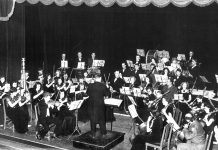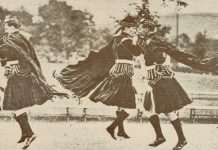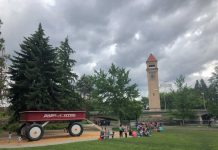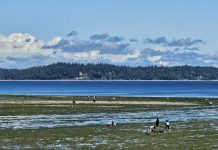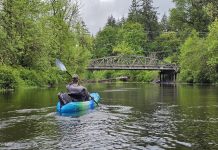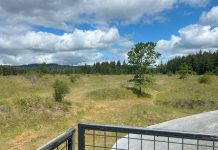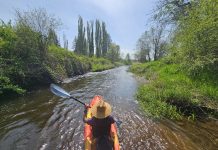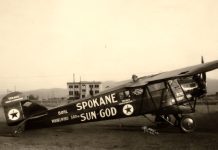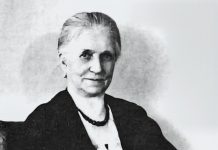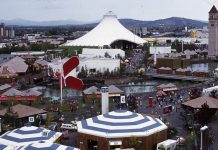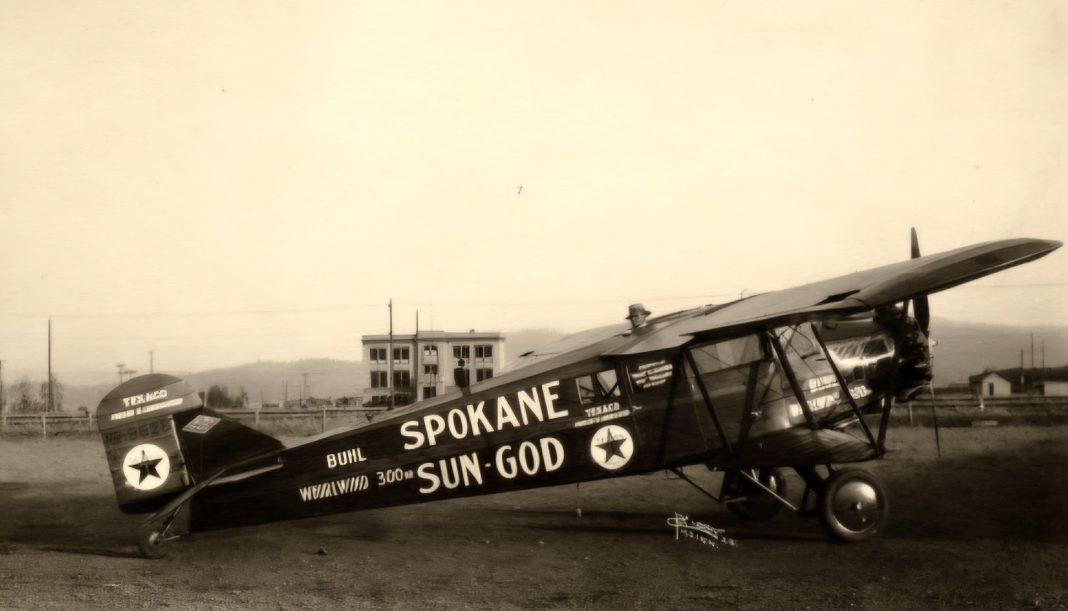Since Icarus, humanity has strained against the earth, dreaming of the sky. In Spokane, that dream found solid ground early with the creation of Felts Field in 1913. Born as Parkwater Field, it became one of America’s first municipal airfields, a crucible where the fragile magic of early flight took root and soared over the Inland Northwest. Over the years, it hosted Charles Lindbergh’s Spirit of St. Louis, record-setting endurance flights, airmail service and National Guard squadrons. Today, it remains one of America’s oldest active municipal airports—and a living monument to flight’s daredevil beginnings.
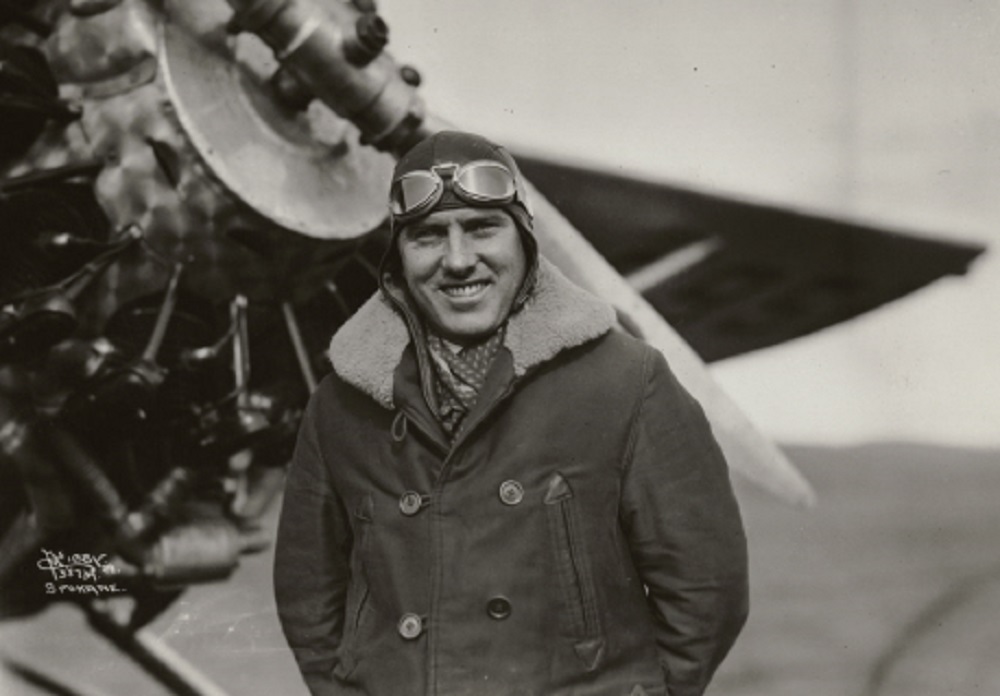
The Dawn of Flight at Parkwater Field
Spokane’s aviation saga ignited when a group of investors carved a dirt runway from farmland east of town in 1913. This leveled city property near the Parkwater area gave the fledgling airfield its temporary name, replacing scattered sites previously used by aviators, including the fairgrounds east of town and Glover Athletic Field along the river. When officially designated as Spokane’s municipal flying field in 1920, crews discovered that the area still required extensive stone removal. This task would fall to county prisoners convicted of chronic drunkenness who would be pressed into service hauling stones off the turf during “field exercises.”
Parkwater Field soon became the backdrop for pivotal aviation milestones. In 1924, Spokane secured its position as the headquarters for Washington’s Air National Guard and its 116th Observation Squadron, which christened their section Camp Earl Hoisington. The field’s growing significance was further cemented when local aviation boosters staged a triumphant Air Show in 1925, demonstrating Spokane’s soaring ambitions.
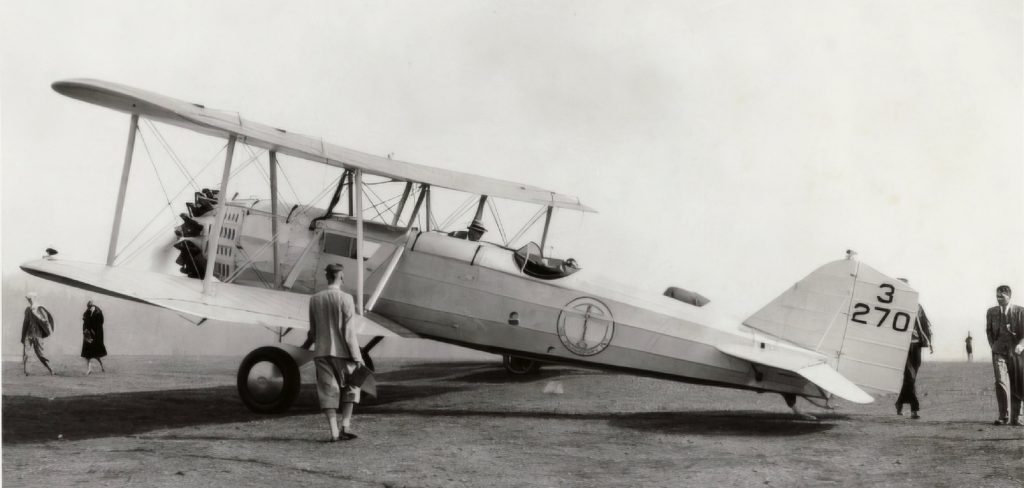
Honoring a Fallen Flyer with Felts Field’s Opening
September 1927 transformed the airfield forever. Renamed Felts Field to honor fallen Washington Air National Guard aviator James Buell Felts, the reborn airport hosted two landmark events that month. On September 12, Charles Lindbergh taxied the Spirit of St. Louis onto the runway as part of his triumphant nationwide tour, drawing thunderous crowds and captivating a city that was witnessing aviation royalty. Just days later, September 21-25 saw Felts Field erupt with the roar of Spokane’s Air Derby and National Air Races, among America’s earliest and most wildly successful aviation spectacles, where biplanes dueled above the hangars in death-defying loops.
The groundwork for future growth was also laid in 1927 with the commencement of construction on a new headquarters building, a structure that still stands proudly today. The true acceleration of the airport’s development, however, coincided with the advent of airmail service in 1929, transforming how goods and information moved across the country.
It was in this atmosphere of innovation that Lieutenant Nick Mamer and his mechanic and co-pilot, Art Walker, launched their extraordinary “Spokane Sun-God” from Felts Field on August 15, 1929. Their daring cross-country endurance flight kept them continuously airborne for an astonishing 120 hours (five full days), covering 7,200 miles as they journeyed from Spokane to New York and back, finally returning to Felts Field on August 20. This monumental feat established several U.S. records, notably the first transcontinental refueling and the first aerial refueling above 8,000 feet, securing a world record for nonstop mileage.
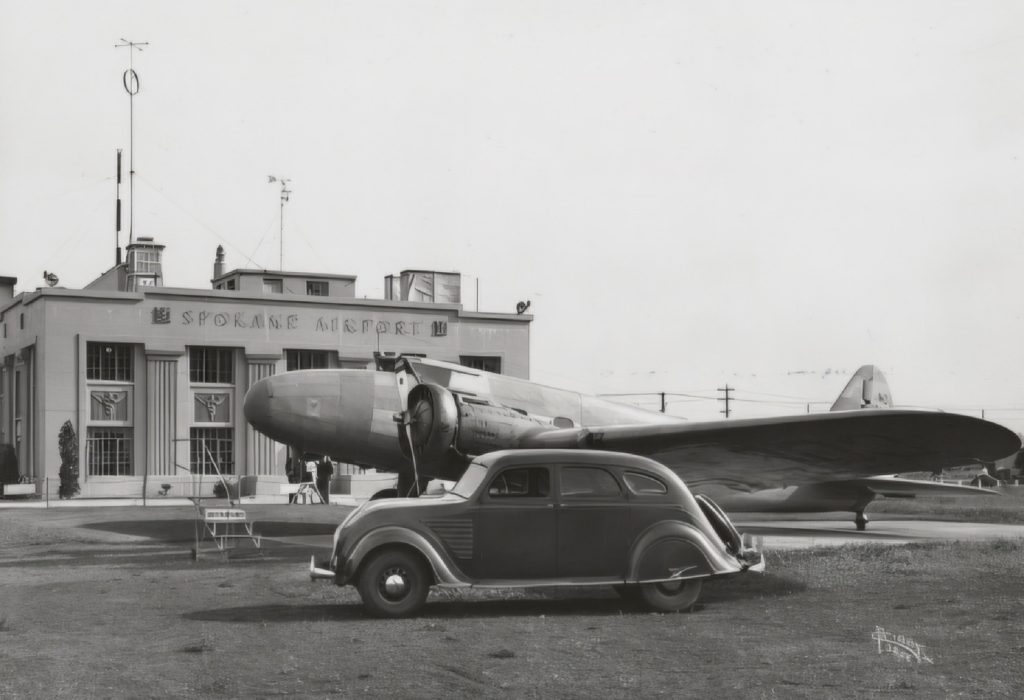
The Era of Airmail and Commercial Travel
A pivotal stride in Spokane’s aviation development during the late 1920s was the long-anticipated arrival of airmail service. Spokane had eagerly observed that Pasco gained airmail connections through Varney Airlines, a precursor to United, as early as 1926. Driven by this competitive spirit, the Spokane Chamber of Commerce launched an intensive publicity campaign and commissioned a thorough survey of potential routes. Their concerted efforts culminated in a landmark moment, the first direct airmail flight from Spokane, which took off from Felts Field on Sunday, September 15, 1929.
Though prior passenger service at Felts Field was primarily charter-based, the early 1930s ushered in modern scheduled passenger flights. United Airlines, formed from a consolidation of Varney, Boeing Air Transport, and other carriers, was among the first to establish regular Spokane service, utilizing the advanced ten-passenger Boeing 247, an all-metal, twin-engine transport. Soon after, Saint Paul’s Northwest Airways expanded its “Northern Tier” route to Spokane, a path aviation pioneer Nick Mamer had proven feasible. Both United and Northwest centralized their passenger and administrative operations within the newly constructed 1932 Art Deco terminal building, a structure that would eventually serve as a gateway to 137 cities.
The burgeoning competition proved challenging for smaller operators like Mamer Air Transport, leading Nick Mamer to sell his planes and hangar. He transitioned to Northwest Airlines, where his expertise was valued as Western Operations Manager and chief pilot on the critical Twin Cities to Seattle route he had pioneered. In 1934, Northwest Airways officially rebranded as Northwest Airlines. With its burgeoning fleet of Lockheed and, later, Douglas planes, it rapidly ascended to become the dominant air carrier operating out of Spokane, further solidifying Felts Field’s role as a major regional air hub.
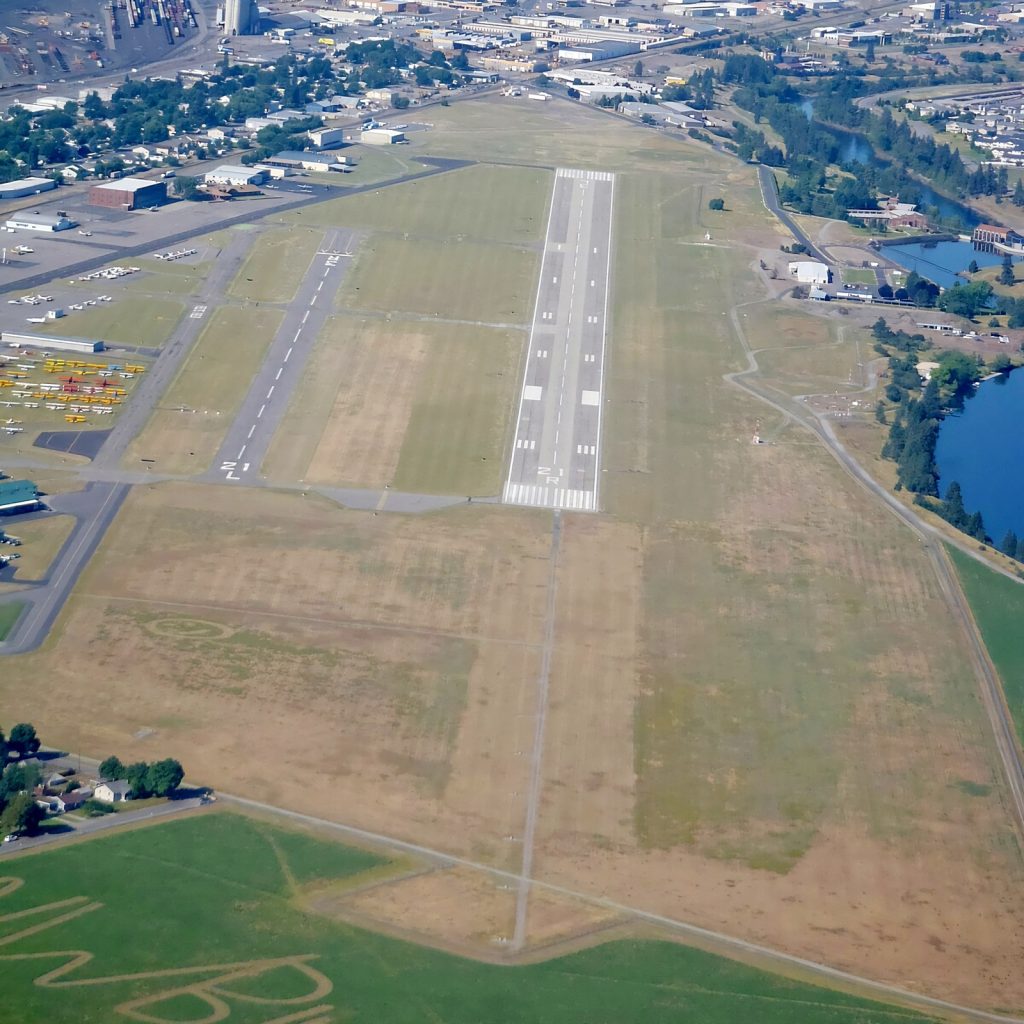
Wartime Crowding and the Birth of Geiger Field
By the late 1930s, Felts Field was bursting at the seams. While continuing to host the Civilian Pilot Training Program, its three runways saw general aviation, Guard drills and charter flights jostling for space. Spokane’s Chamber of Commerce recognized that the city needed a “super airport” to match its growing role as a regional hub. After survey teams from the Civil Aeronautics Administration and local carriers scouted sites, county officials bought 1,280 acres west of town.
In 1939, Felts Field was leased to the Army for a dollar a year. As a result, civilian flights were halted, and the Works Progress Administration teamed with military engineers to pave new runways. Although city leaders pitched Felts as an Army Air Corps base, the War Department opted for the sprawling Sunset Airport, rechristened Geiger Field in 1941 in honor of Maj. Harold C. Geiger. The Washington Air National Guard’s 116th Observation Squadron decamped there. Passenger liners and military squadrons followed after the war, and by 1960, all airline service operated out of what became Spokane International Airport.
Despite losing its commercial and military traffic, Felts Field retained its vintage soul, and its buildings endured. The core of the Felts Field Historic District lies along Rutter Avenue: three wood-and-steel hangars, the 1932 Art Deco passenger terminal with its Pegasus bas-relief, the Guard’s headquarters, a modest storage shed, and the 1939 Moderne clock tower memorializing Lt. Nick Mamer and nine others. The field’s 1940-era paved runways remain essentially unchanged, a wide ribbon of blacktop threading through the same open meadow first cleared in 1913.
Today, Felts thrives as a general aviation airport, with flight schools, seaplane operations, and vintage-aircraft restorers sharing its ramps, preserving both the form and the spirit of Spokane’s earliest days of flight.






